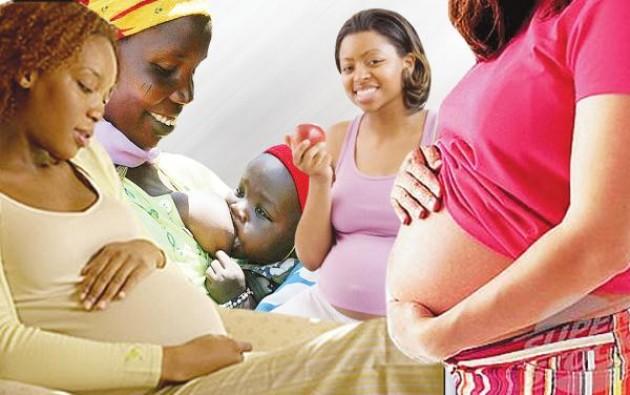Culled From Leadership News:
According to the World Health Organisation, WHO an estimated 15 million babies are born too soon while around one million die annually due to complications of preterm birth. While the cause of preterm birth is in most cases unknown and hard to pin down, many factors appear to be associated with this situation, with the most recent- pollution. Pregnant mothers now have something new to worry about during pregnancy – the level of pollution in the area they live. High pollution levels in towns and cities have now been linked to an increased chance of premature births. RALIAT AHMED –YUSUF writes.
Expectant mothers living in large towns or cities are a third more likely to give birth to preterm babies because of pollution, a new research suggests.
A preterm baby also known as premature occurs when a baby is born before its normal gestation age, that is, before the developing organs are mature enough to allow normal postnatal survival.
While factors such as infection, bleeding and stretching of the uterus exposes an expectant mother to the risk of having a premature baby, traffic fumes according to a new study are the biggest culprit, with chemicals called polycyclic aromatic hydrocarbons (PAH), a by-product of petrol, producing a 30 per cent increase in risk.
Ammonium nitrate from agriculture and industry heightened the threat of premature birth by a fifth that is, 21 per cent – while benzene, a petrochemical, and diesel fumes caused a 10 per cent increase.
Study author Dr Beate Ritz says ‘Air pollution is known to be associated with low birth weight and premature birth.
‘Our results show traffic-related PAH are of special concern as pollutants and that PAH sources besides traffic contributed to premature birth.
“The increase in risk due to ammonium nitrate particles suggests secondary pollutants are also negatively impacting the health of unborn babies.”
Researchers from the University of California looked at 100,000 births within a five-mile radius of air quality monitoring stations in the state where Los Angeles is notorious for car-related air pollution.
The results, published in the journal Environmental Health, revealed that an increased concentration of PAH, benzene or diesel could increase the risk of giving birth prematurely.
Dr Ritz explain further: Some pollutants were area-specific, relating to industry and urbanisation. However, overall exposure to critical pollutants such as PAH resulted in up to a 30 per cent increase in the risk of premature birth.
“Other toxic substances, such as benzene and fine particulate matter from diesel fumes, were associated with a 10 per cent increase, while ammonium nitrate fine particles were associated” with a 21 per cent increase.
Dr Sheriff Abdullahi, a medical practitioner based in Abuja, says when one lives in the city, one is likely not breathing the best air around because cars, trucks, furnaces, and industrial machinery all emit poisonous carbon monoxide into the air.
He also says that inhaling second-hand smoke from cigarettes and cigars, also exposes one to inhaling carbon monoxide – a deadly, odourless gas that causes sudden death at high levels of concentration.
He states further that, exposure to air pollution has a lot of negative side effects on human health, including pulmonary, cardiac, vascular, and neurological impairments. People who are at higher risk are the elderly, children and pregnant women.
Pregnant women tend to be more vulnerable because when they inhale polluted air, be it from cars, cigarettes, etc, carbon monoxide enters the body and interferes with the blood’s ability to bring oxygen to all body parts and organs. Without oxygen, the body soon shuts down, he adds
In the foetus, carbon monoxide crosses the placenta and reduces the amount of oxygen that is delivered and circulated. This can cause an condition called foetal growth retardation – an abnormality of foetal growth inside the womb that causes a increase in mortality.
Abdullahi, however says that although millions of healthy babies are born to mothers who live in smog-choked cities and who spend lots of time in smoke-filled rooms, to be on the safe side it is advisable to avoid staying in the middle of a smog-filled or smoky area.
Carbon monoxide is dangerous. It is also advisable to hold your breath every time you walk outside and take a few precautions that will keep the foetus perfectly healthy:
•Ensure that stoves, fireplace and gas cookers are all working properly as they can leak carbon monoxide.
•Check the exhaust system in your car for leaks.
•Avoid jogging, running, walking, or cycling along roads with heavy traffic.
•Avoid smoke-filled rooms.
Mrs Rukayat Aliu, a mother of three children says, ‘My second child was a preterm .I was induced at 31 weeks when it became obvious that I might not be able to carry the baby to full term. But unfortunately the baby didn’t survive due to brain hemorrhage- one of the most common complications in premature babies’.
On what she thinks was the cause, she says that from the fifth week of her pregnancy she experienced bleeding which doctors said was due to stress.
According to Aliu, pregnant women are exposed to a lot of risks that may eventually lead to having a premature baby. “It is important to avoid anything that can lead to giving birth prematurely, especially stress and other risk factors”, she advises
PRETERM BIRTH STATS
• Every year, an estimated 15 million babies are born preterm (before 37 completed weeks of gestation), and this number is rising.
• An estimated 1 million babies die annually from preterm birth complications.
• Preterm birth is the leading cause of newborn deaths (babies in the first four weeks of life) and the second leading cause of death after pneumonia in children under five years.
• Three-quarters of them could be saved with current, cost-effective interventions, even without intensive care facilities.
• Across 184 countries, the rate of preterm birth ranges from 5% to 18% of babies born.












Recent Comments